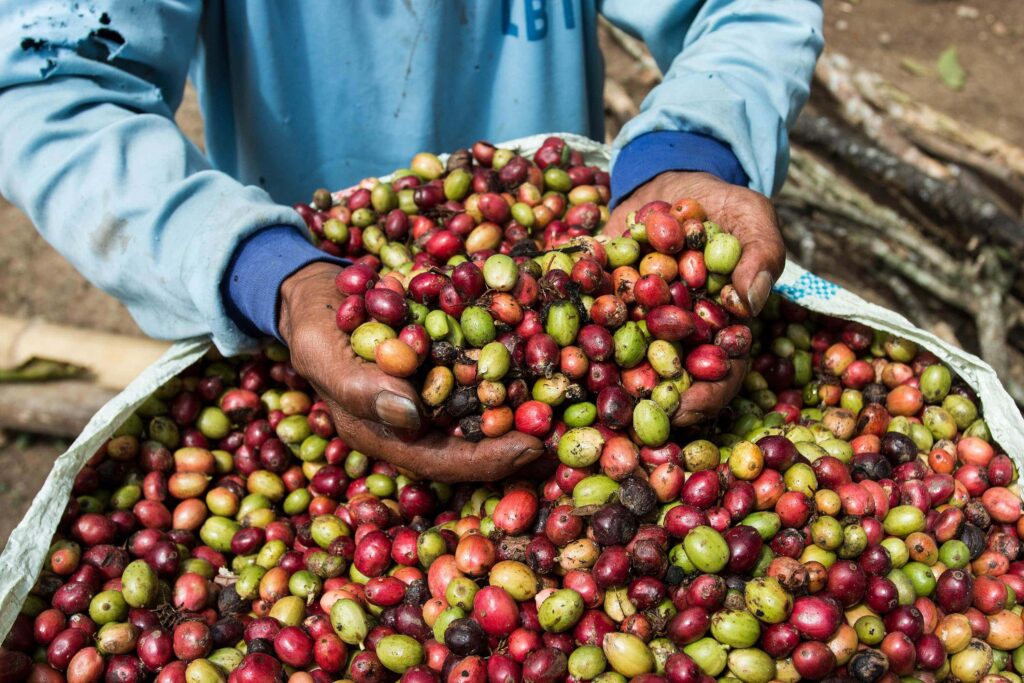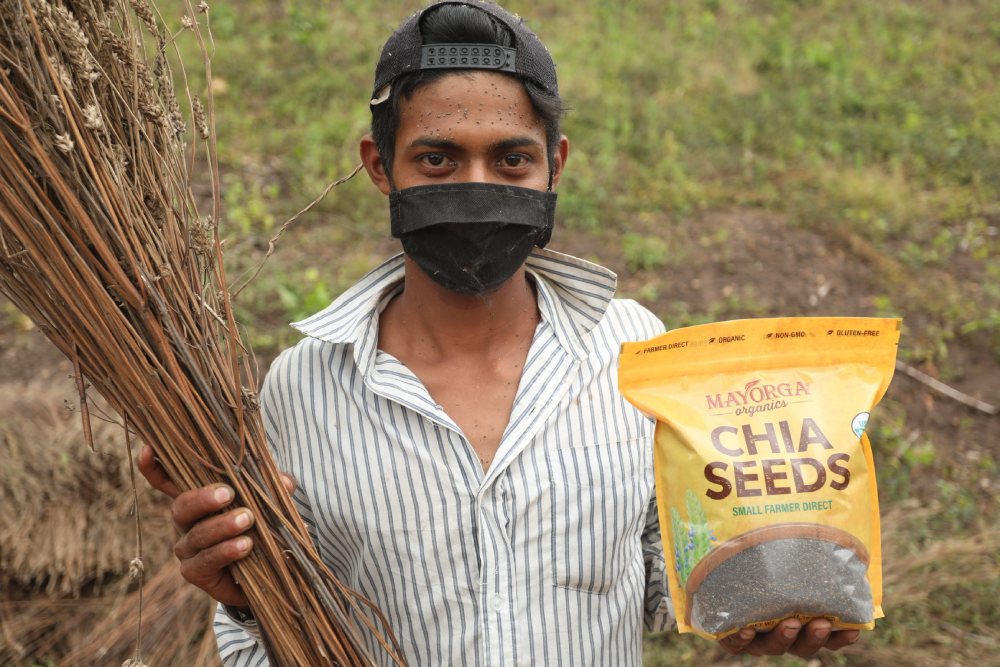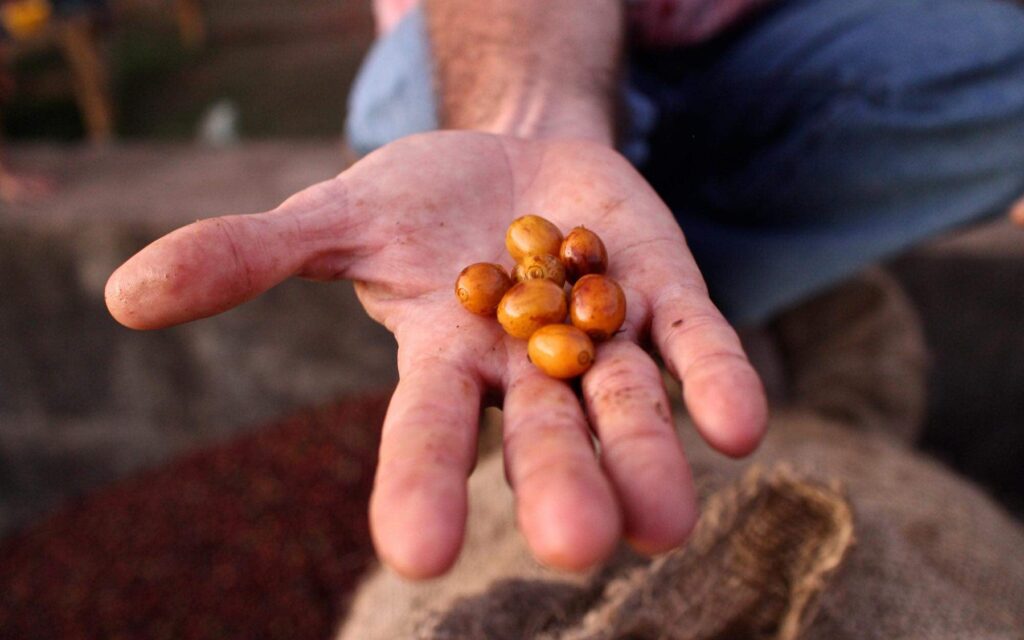WCR discusses its new Robusta Catalogue for farmers

World Coffee Research discusses its new open-access Robusta Catalogue intended to support farmers in making informed decisions about robusta categories.
Since the life of a coffee tree is 20 to 30 years, the decision farmers make about which coffee variety to plant has long-term effects on their success. To help guide the decision- making process, World Coffee Research (WCR) has released the Robusta Variety Catalog, a new resource to assist Robusta farmers access transparent information on available varieties and how they differ.
“WCR first consulted with Robusta technical experts to determine the most important data to include in the catalogue. Then, we worked with the breeders of each of the included varieties to compile information about the different plants and their performance. All of the participating breeders reviewed the final data for all varieties in the catalogue. In all, 21 experts from nine countries participated in its creation,” says Hanna Neuschwander, WCR Communications and Strategy Director, who helped oversee the production of the catalogue.
The Robusta catalogue was generated through collaborative sourcing of data about varieties from breeders and other experts, including from the Central Coffee Research Institute, the Indonesian Coffee and Cocoa Research Institute, the Brazilian Agricultural Research Corporation, the National Coffee Research Institute of Uganda, the Western Highlands Agroforestry Science Institute, and Nestlé’s Research Center.
The catalogue, available in English and Spanish, profiles 47 Robusta varieties from origins such as Brazil, India, Indonesia, Uganda, Mexico, and Vietnam. It uses more than 20 variables, such as yield potential, stature, bean size, nutrition requirements, lineage, susceptibility to pests and diseases, and many more.
According to WCR, until recently, Arabica coffee has held reign over most of the coffee market due to preferences for its beverage quality. But various factors including the increasing demand and climate pressure for farmers have led to expansions in Robusta production.
“Robusta can be farmed in areas that Arabica can’t, for example at lower elevations, allowing new land to come under production and more farmers to embrace coffee. It also produces higher yields and is tolerant to more diseases and pests,” says WCR Research and Development Director Dr. Tania Humphrey.
“Since our founding over 10 years ago, WCR has worked to empower farmers by making tools available to choose the right varieties for their farms and their markets,” says WCR CEO Dr. Jennifer “Vern” Long. Now that Robusta comprises 40 per cent of the coffee produced and marketed globally, we saw the need to support farmers by creating this tool.”
With Robusta’s growing prevalence in the global market, WCR hopes the catalogue will lower the risk associated with coffee farming by providing direct information to enable farmers and other decision-makers to make an informed choice about what varieties will grow best in particular environments. Humphrey says choosing the right cultivar lowers the risk of pest and disease crop losses, can enhance cup quality, and will be critical for coffee producers facing rapidly changing climates.
“Robusta farmers typically sell into lower- value markets where variety differentiation is non-existent. Many farmers have no idea what actual variety they have, but make a best guess based on the physical characteristics of their tree. This is typically due to the age of many coffee farms, and the tradition of smallholder farmers passing along seeds,” Humphrey says.
“There is overall a massive lack of capacity in the whole system – variety releases are few and far between, institutions don’t have a lot of ability to market new varieties to farmers and create variety name recognition, and a lot of information just gets lost along the way. In the end, farmers don’t have a tonne of choices about what they can plant, and they don’t know much about the choices they do have,” says Humphrey.
Humphrey adds that an added complication for Robusta is that it’s an outcrossing species, meaning that in order for a plant to produce any fruit at all, it needs to be planted near a different variety. This means farmers must plant a mix of varieties in order to get fruit; meaning every field is a mixture of different plants.
“Because of this, farmers must cultivate a variety of complementary clones to enhance fruit production and quality. These mixtures, which typically comprise officially released commercial varieties, are often distributed to farmers with minimal transparency about what clones are included in the mix and their unique properties. The lack of a comprehensive, up-to-date variety information and officially recommended planting patterns puts farmers at risk and perpetuates chronically low yields around the globe,” she says.
Alongside the detailed variety profiles, catalogue users can find a consolidated and peer- reviewed history of Robusta as a species, which tracks it from its origins in central and western sub-Saharan Africa through its dispersal across Asia and Latin America to its cultivation today. The history also provides a brief overview of the genetic diversity and conservation of Robusta to provide readers the opportunity to better understand how well-differentiated the various populations of this species are.
The varieties in the Robusta catalogue were selected for inclusion because of their economic, historical, cultural, or genetic importance, but significant gaps in data for many Robusta varieties remain.
“The genetic diversity of Robusta coffee is also much larger than that of Arabica, and it is only just beginning to be explored by breeders and the industry at large. The catalogue, therefore, does not aim to represent an exhaustive list of all coffee varieties in existence,” says Humphrey.
Humphrey says another reason for gaps in the catalogue’s data is that the coffee sector lacks global collaboration on Robusta research.
“Not all diseases and pests are present in every country. For example, coffee berry disease is so far not present in the Americas, but it is a major issue in Africa. A Robusta variety developed in the Americas hasn’t been exposed to this disease, so we don’t know if it is susceptible or not,” she says.
But the biggest reason, says Long, is that the world deeply under-invests in coffee research and development.
“The institutions that are developing Robusta varieties for farmers are public institutions, often in lower-resourced countries, and don’t have the kind of stable, long-term budgets they need. WCR recently calculated that, per year, we should be investing US$452 million more than we currently do in coffee research and development, which includes breeding for Robusta,” says Long.
Humphrey adds that Robusta research is also in its infancy, and “there is so much more that can and needs to be done to understand the plant”.
“For example, it has long been assumed that Robusta is tolerant to higher heat than Arabica, but recent research challenges that assumption. The Robusta species is more genetically diverse than Arabica, so it’s possible, even likely that some Robustas possess unique heat tolerance and others are more sensitive. The world has a lot of work to do to further understand what Robusta is capable of,” she says.
This resource serves as an expansion of WCR’s popular Arabica Variety Catalog, which was launched in 2017 and profiles Arabica varieties from around the world.
“At the time of its release, the Arabica catalogue was a first-of-its-kind resource and the only global compendium of information about available coffee varieties for farmers, buyers, and roasters. The resource has been viewed over one million times since its launch and, as a living document, continues to support WCR’s goal to improve the availability and accessibility of improved planting material for farmers around the world,” says Neuschwander.
Long says WCR is a trusted global source of information about coffee varieties.
“With the rise in interest in Robusta coffee, we felt it was time to expand the catalogue to include Robusta,” she says. GCR
For more information, visit worldcoffeeresearch.org
This article was first published in the July/August 2023 edition of Global Coffee Report. Read more HERE.
The post WCR discusses its new Robusta Catalogue for farmers appeared first on Global Coffee Report.




Responses